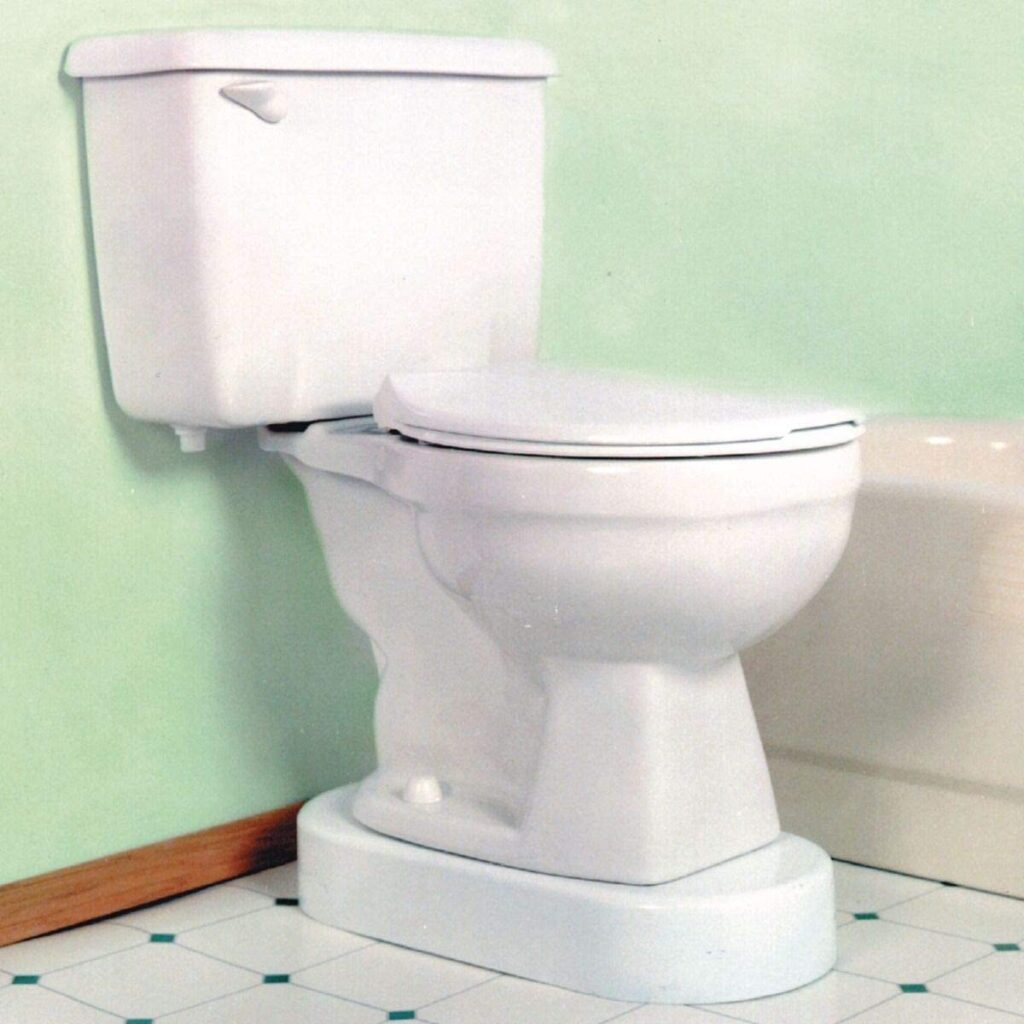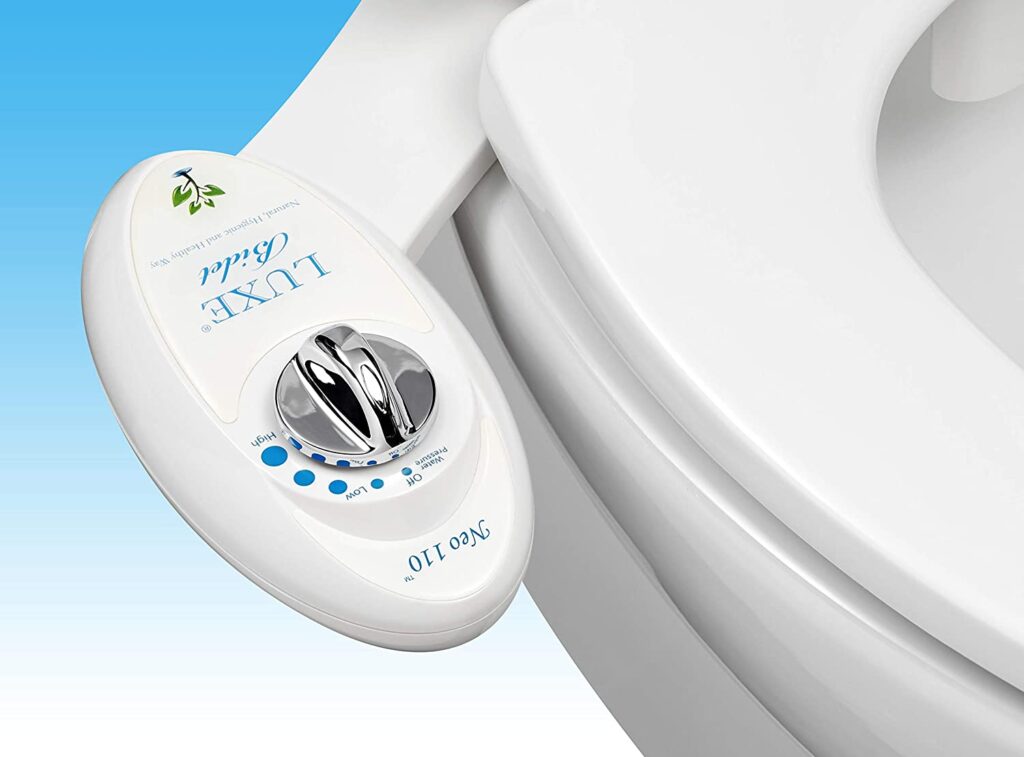Have you noticed a stubborn pink ring forming in your toilet bowl? It’s not just an eyesore—it can be downright frustrating to clean, only to see it reappear days later.
You might be wondering, “Why does this keep happening, and how can I stop it for good? ” The truth is, this mysterious pink stain has a surprising cause, and understanding it is the first step to getting rid of it.
In this post, we’ll uncover what’s behind the pink ring in your toilet bowl and share tips to keep your bathroom sparkling clean. Stick around—you won’t want to miss the solution to this common problem!

Credit: www.reddit.com
Table of Contents
Common Causes Of Pink Ring
Have you ever noticed a strange pink ring forming in your toilet bowl? It’s not just an eyesore—it can be a recurring issue if you don’t address its root cause. Understanding what causes this ring can help you tackle it more effectively and keep your toilet looking clean.
Bacterial Growth In Water
One of the most common culprits behind the pink ring is a bacteria called Serratia marcescens. It thrives in moist, low-ventilation areas, feeding on soap scum, phosphates, and other organic materials. If you’ve noticed this stubborn pink stain in your toilet, it’s likely due to the bacteria finding the perfect breeding ground in your toilet bowl water.
Does your toilet sit unused for long periods? This could make it even easier for the bacteria to grow, as stagnant water creates the perfect environment. Regular flushing and cleaning can disrupt its growth cycle and reduce the chances of reappearance.
Hard Water Deposits
If you live in an area with hard water, you might notice mineral buildup in your toilet bowl over time. These deposits can mix with bacteria, creating the pink or reddish ring you see. Hard water contains minerals like calcium and magnesium, which leave behind a residue that bacteria love to cling to.
Try running your hand along the inside of your toilet bowl. Feel a gritty or chalky texture? That’s likely hard water residue. Using a water softener or a specialized toilet cleaner can help prevent buildup and, in turn, reduce the pink ring problem.
Poor Ventilation
Is your bathroom poorly ventilated? A lack of airflow can create the damp, humid conditions where bacteria thrive. Bathrooms without windows or proper ventilation fans are especially prone to this issue.
Think about how steamy your bathroom gets after a shower. That same moisture lingers in your toilet, encouraging bacteria like Serratia marcescens to grow. Open a window or run a fan after using the bathroom to keep air circulating and reduce moisture levels.
Tackling a pink ring isn’t just about cleaning—it’s about understanding why it forms in the first place. Which of these causes seems most likely in your bathroom? Identifying the issue is the first step toward finding a lasting solution.
How Bacteria Create Stains
Ever noticed a stubborn pink ring in your toilet bowl? This discoloration isn’t caused by poor cleaning. It’s the result of bacteria that thrive in damp conditions. These microscopic organisms create stains that can be tough to remove. Understanding how bacteria work can help prevent these unsightly marks.
Serratia Marcescens Explained
Serratia marcescens is the bacteria often responsible for pink rings. It’s a rod-shaped microorganism found in water, soil, and air. This bacterium thrives in moist environments, especially bathrooms. The pink hue comes from pigments produced during growth. These pigments are harmless but can leave stains.
Bathrooms with frequent water usage provide perfect conditions for Serratia marcescens. It can grow on toilet bowls, shower curtains, and sinks. Soap scum and residue also encourage bacterial buildup. Regular cleaning can reduce its presence but may not eliminate it entirely.
Conditions That Promote Growth
Pink ring bacteria grow well in warm, damp spaces. Bathrooms with poor ventilation are especially prone to bacterial growth. Low airflow leads to higher moisture levels, creating the ideal setting for Serratia marcescens. Standing water or condensation further accelerates bacterial reproduction.
Residues from soaps, shampoos, and cleaning products can worsen the issue. These residues act as food for bacteria, supporting their growth. Even small amounts of residue can make a difference. Keeping surfaces dry can help limit bacterial activity.
Impact Of Humidity
High humidity is another major factor in pink ring formation. When bathrooms lack proper ventilation, humidity levels rise. This creates a perfect environment for bacteria to thrive. Warm temperatures combined with moist surfaces encourage bacterial reproduction. The pink ring often appears faster under these conditions.
Using exhaust fans or opening windows can help reduce humidity. Drying wet surfaces after use also minimizes moisture buildup. Lower humidity levels make it harder for Serratia marcescens to grow. Regular maintenance can help keep your bathroom free of these stains.
Environmental Factors
If you’ve noticed a pink ring forming in your toilet bowl, you’re not alone. The culprit often lies in the environment around your home. Factors like water quality, temperature, and even your cleaning habits can play a significant role in this annoying issue.
Role Of Water Quality
The quality of your water supply can directly impact the appearance of pink stains. Hard water with high mineral content can encourage the growth of Serratia marcescens, the bacteria responsible for that pinkish hue. Homes relying on well water may see this issue more frequently due to naturally occurring minerals.
If your water contains high levels of iron or magnesium, it can create a perfect breeding ground for bacteria. Using a water-softening system or installing a filter can help mitigate this problem. Have you checked your water quality lately?
Temperature Influence
Warm, humid climates make pink rings in toilets more common. Serratia marcescens thrives in moisture-rich environments where it can multiply quickly. If you live in a region with higher temperatures, you might notice these stains appearing more frequently.
Even inside your home, a poorly ventilated bathroom can create the ideal conditions for bacterial growth. Consider using an exhaust fan or leaving a window open to reduce excess moisture. A little airflow can go a long way in keeping your toilet bowl cleaner.
Effect Of Cleaning Habits
Your cleaning routine—or lack of one—could be contributing to the problem. Infrequent scrubbing allows bacteria to settle and form that stubborn pink ring. Even if you clean regularly, not targeting hidden areas like under the rim can make things worse.
Switching to a cleaner with antibacterial properties can help keep bacteria at bay. Try to clean your toilet at least once a week and pay attention to those hard-to-reach spots. Are you giving your toilet the TLC it needs?
By understanding these environmental factors, you can take proactive steps to minimize pink stains. Remember, a little effort now can save you a lot of scrubbing later!

Credit: www.youtube.com
Effective Cleaning Methods
Pink rings in toilet bowls can be stubborn and unsightly. Regular cleaning is essential to keep your toilet fresh and hygienic. Using effective methods can help remove the stains and prevent them from returning. Below are some proven cleaning techniques to tackle the pink ring problem.
Using Vinegar And Baking Soda
Mix equal parts white vinegar and baking soda to create a paste. Apply it to the pink-stained areas inside the toilet bowl. Allow it to sit for 15–20 minutes. Use a toilet brush to scrub the stains gently. Rinse thoroughly with water. This method is natural and works well for light stains.
Bleach-based Solutions
Pour a cup of bleach directly into the toilet bowl. Let it sit for 10 minutes to disinfect and break down stains. Scrub the bowl with a toilet brush to remove the pink ring. Flush the toilet to rinse away the bleach and residue. Avoid mixing bleach with other cleaners for safety.
Natural Alternatives
Lemon juice and salt can be a great natural solution. Sprinkle salt on the stained area, then pour lemon juice over it. Let it sit for 10–15 minutes before scrubbing with a brush. Flush the toilet to rinse thoroughly. This method is safe and eco-friendly for regular cleaning.
Long-term Prevention Tips
Pink rings in toilet bowls are caused by Serratia marcescens bacteria. These thrive in damp, humid environments with low airflow. Preventing them requires consistent effort and effective strategies. Long-term prevention not only keeps your bathroom clean but also avoids recurring issues.
Improving Bathroom Ventilation
Proper airflow reduces moisture buildup, which bacteria need to survive. Install exhaust fans to remove humid air after showers or baths. Open windows regularly to allow fresh air into the space. Keep your bathroom door slightly open to promote circulation. This lowers the chances of bacterial growth.
Regular Cleaning Schedule
Routine cleaning removes bacteria before they spread. Scrub the toilet bowl weekly using a disinfectant cleaner. Pay extra attention to the waterline, where pink rings form. Wipe down bathroom surfaces to eliminate moisture buildup. Dry all areas thoroughly after cleaning to reduce dampness.
Water Softening Techniques
Hard water often encourages bacteria growth due to mineral deposits. Install a water softener to reduce mineral buildup in your toilet bowl. Use cleaning agents designed for hard water to prevent stains and rings. Regularly flush the toilet to avoid stagnant water that bacteria thrive in.
When To Seek Professional Help
Not every pink ring in your toilet bowl demands a professional’s attention, but there are times when calling in the experts is the smartest move. If you’ve tried scrubbing, switching cleaning products, and checking your water habits, yet the issue persists, it might be time to dig deeper. Let’s break down when you should seek professional help and what signs to watch for under specific situations.
Persistent Stains
Are you scrubbing endlessly, only to see the pink ring return within days? Persistent stains could be a sign of something more serious than just Serratia marcescens (the bacteria often causing the pink hue). It might point to hard water deposits or a buildup inside your pipes that needs specialized cleaning tools.
If your cleaning efforts don’t seem to make a difference, save yourself the frustration. A professional plumber or cleaning expert can assess the root cause and apply solutions that are beyond your typical household products.
Plumbing Issues
Sometimes, the pink ring is more than just a surface issue. It could indicate underlying plumbing problems, like a leaking toilet tank or old, corroded pipes. These can create an environment for bacteria to thrive, no matter how clean you try to keep your toilet.
Notice strange odors, unusual water flow, or constant discoloration in your toilet bowl? These are red flags that might require a plumber’s expertise. Ignoring plumbing issues can lead to higher repair costs down the road, so don’t wait too long to act.
Testing Water Quality
Is your water the real culprit? High iron content or unbalanced pH levels in your water can contribute to that stubborn pink ring. If you suspect your water might be the issue, a professional water quality test can confirm it.
Local water treatment companies or plumbers often offer testing services. If the results reveal a problem, they can recommend solutions like water softeners or filtration systems to prevent further stains in your toilet and other fixtures.
So, the next time you’re battling a pink ring that refuses to leave, ask yourself: is it time to call in the pros? Tackling the cause directly can save you time, effort, and money in the long run.

Credit: askahousecleaner.com
Frequently Asked Questions
What Does A Pink Ring In Your Toilet Mean?
A pink ring in your toilet often indicates bacterial growth, commonly Serratia marcescens, thriving in moist environments. Regular cleaning prevents buildup.
How Do You Get Rid Of Pink Ring In Toilet?
Scrub the pink ring with baking soda and vinegar. Clean regularly to prevent bacterial growth causing discoloration.
What Bacteria Causes Pink Rings In The Toilet?
Serratia marcescens bacteria cause pink rings in toilets. It thrives in moist areas with soap scum, mineral deposits, or poor ventilation.
What Mineral Leaves A Pink Residue?
Feldspar is a mineral that can leave a pink residue. It is commonly found in igneous rocks like granite.
Conclusion
Pink rings in toilet bowls often result from bacteria or mold growth. Moist environments and poor ventilation make it worse. Regular cleaning and proper ventilation can help prevent this issue. Use natural cleaners or mild disinfectants to tackle stains safely.
Always dry surfaces after cleaning to reduce moisture. Address plumbing leaks promptly to avoid recurring problems. Paying attention to these small steps can keep your toilet clean and hygienic. Understanding the cause makes maintenance easier and more effective. Keep your bathroom fresh with consistent care and simple cleaning habits.






